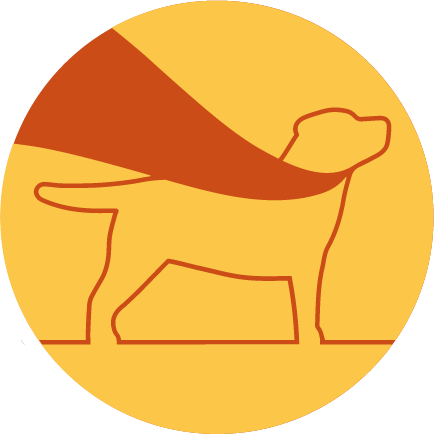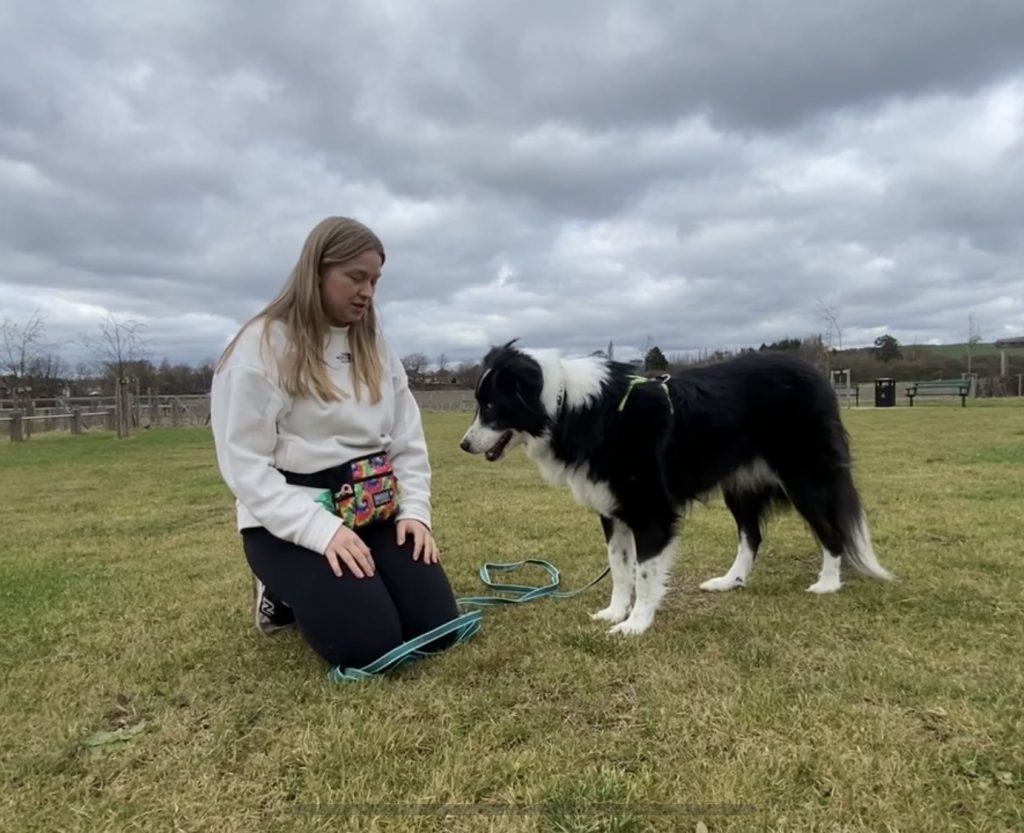Top Training Tips For Blind Dogs
Having a dog without sight can be challenging, but it is also very rewarding. If you are recently adjusting to having a blind dog, you may feel overwhelmed and uncertain of how to approach their training. Fear not! With the right knowledge and guidance, you will soon understand your dog better than ever before – and even have some fun along the way! In this blog post we will give an overview of top tips for training your blind dog, so that they can live life to its fullest.
Understanding Your Dog’s Visual Impairment – How your dog may be impacted by a reduction or loss of vision
Losing sight can be incredibly traumatising for a dog. Vision loss can occur due to variety of reasons such as being born without sight, a medical condition, abuse or we may have a rescue dog and we just don’t know their background. When we look at the different factors of why a dog might be blind this can then vary how we might approach their training.
A dog born without sight will generally be quicker, bouncier, not as worried about the world around them and barging around the house with a bull in a China shop mentality.
A dog who has lost their sight due to a medical condition will inevitably be slower and more anxious – their whole world has changed and they’re confused. We can’t explain to them why.
A dog who has been attacked by another dog or been physically abused by a human and lost their sight, will of course not only be worried and scared by blindness but this can also have a huge long term impact on their relationships and behaviour too.
A rescue dog who comes to you with uncertainty and cautiousness might also be very lost without their sight to read what is happening around them or where they are now.
Essentially, any loss of vision can lead to fear and anxiety in our canine friends. It’s important to find the right training information so that you can best understand your blind dog and train them accordingly. Through providing the necessary support and guidance, they will be able to adjust better to their visual impairments and continue taking on new challenges with confidence. There is not a one approach fits all here.
Establishing A Routine – Create a predictable daily routine to help your dog feel secure
Establishing a routine for your blind dog can be a great tool to help them feel secure. Creating a time of day when you perform the same activities helps them to understand the patterns in their environment. Keep it as simple, steady, and consistent as possible, as adjustments in time or activity may confuse your companion while they’re settling into life without sight. With time and dedication, your blind dog will feel secure and then you can start to mix things up a little. We want to make sure they’re in a good place before we start changing things though!
Using Food Rewards – Why food works
Food rewards are a great tool for positive reinforcement with blind dogs, as it encourages the learning while also creating an optimistic experience. Rewarding your dog with their favourite treats when they do something you like will help to reinforce that behaviour. Your blind dog will become more motivated to repeat certain actions, leading to a more confident dog in the long-run. It is also important to maintain a positive environment while training – no punishments or aversive tools should ever be used. Not only does it break down your bond with your dog but also makes it harder for them to learn. The recipe for success is consistency, practice and patience! It is important to note that food is not the only motivator for learning but it is a nice easy place to start getting your dog on board with their journey to triumph.
Setting Boundaries – What do they look like
Setting boundaries with a blind dog is an extremely important part of training. There are three types I want to discuss here.
Physical Boundaries – A way of keeping our blind dogs physically safe is to restrict their limitations, such as where the dog is and isn’t allowed to roam in the home. That could be a baby gate to keep them from falling down the stairs, it could be that you always close the door to the cleaning cupboard to keep them from injury. Maybe the garden is fenced off or they have separate area to go in so they don’t fall in any open water like a pond or pool. Physical boundaries also include things like a leash to prevent them from wondering off or into hazards on walks. It could be a muzzle to prevent them from picking things up or snapping at someone out of fear because they were startled.
Touch Boundaries – Leading on from fear snapping, we need to make note of how we communicate with our blind dogs through touch. Blind dogs can startle easily so think about what might happen if you place your hands on them when they don’t expect it. You can put a cue to touch if it helps!
Verbal Boundaries – Cues can be used for keeping your blind dog safe too. We rely heavily on our voices to help them understand the world around them more from our perspective. This could be teaching cues like “wait” or “stop”. Me personally, I say “Woahh!” if they’re about to walk into something because it is my natural reaction. Recall is also important to keep them safe and get them back to you when there might be a danger close by.
Giving Them An Outlet For Their Predatory Instinct – How we can give them a feeling of self-belief
Training a blind dog may seem like an intimidating task, but giving them an outlet for their predatory instincts can really help boost their confidence and give them a sense of achievement. Allowing the dog to chase and catch a toy helps sharpen their skills and gives them something to work towards. Instead of hunting prey, you can use a longer tug toy – by dragging it along the ground they can hear it then they can pounce on it, as if they were actually catching something in the wild, and grab it with their mouth and shake it. You can let them dissect a toy like they would with actual prey – go to the charity shop and get some old toys or buy a hol-ee ball and stuff it with old fleece and treats for them to rip up (you can re-use the ball and fleece!). This allows your blind dog to feel accomplished and provides them with a sense of self belief that helps them in general day to day life.
Ultimately, it takes patience and understanding to provide the best possible care for a blind dog. With proper guidance, blind dogs can lead happy lives just like any other pet. While having a blind dog can be initially challenging, you as the owner can make all the difference. If you are looking for resources to help with this endeavour, our online course is packed with information to help you better understand your blind dog and train them to their full potential. It’s important to remember that YOUR blind dog is unique — knowing what works best for them is the key to success. By taking into account the considerations listed here, establishing a routine, using food rewards, setting boundaries and offering outlets for predatory instincts will help your pup live a well-balanced life!


